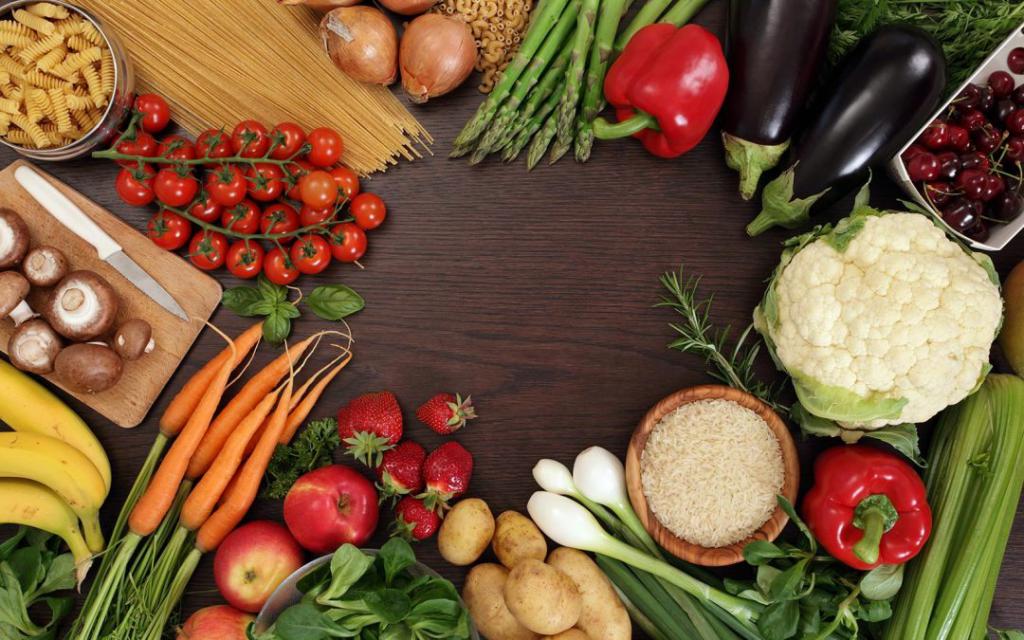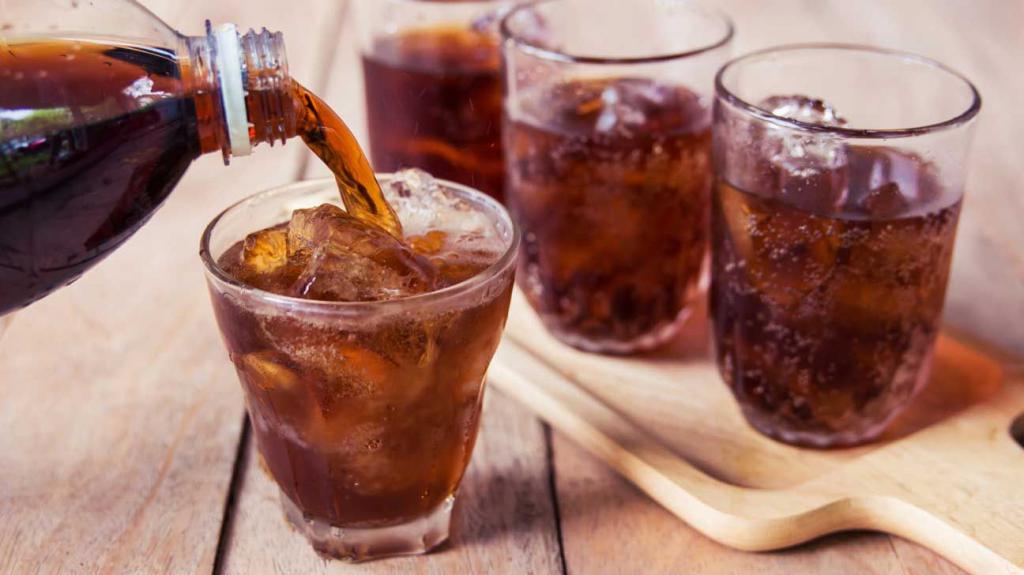Currently, the media pays great attention to the topic of a healthy lifestyle. Many people recognize the importance of this issue and try to make changes in their usual way, while others still perceive it as continuous prohibitions and deprivations. A healthy lifestyle is not magic and every person can follow it, because it consists in a balanced diet, regular exercises and effective stress management. Maintaining these simple rules can significantly improve the quality of our life, increasing its duration and providing us with physical and mental health.
Healthy eating
The most important part of a healthy lifestyle program is nutrition, because as a result of unhealthy habits in choosing foods, not only weight increases, but health problems also worsen. By choosing healthy foods, we can protect ourselves from these problems and get the nutrients our body needs while remaining healthy, active and strong.

Dietary habits acquired in childhood are often transferred to adulthood, therefore it is very important to form an understanding in children from the very beginning of the importance of choosing the right diet to help them stay healthy throughout their lives. And since we are talking about children, let's remember what products so loved by children cause the greatest excitement among parents and raise a lot of questions about the safety of their use and composition, of course, these are products containing sugar and its substitutes. Increasingly, the content of glucose-fructose syrup is mentioned in the composition of products, and today we will try to figure out what it is and what effect it has on our body.
What is glucose and fructose?
Glucose, or grape sugar, is a simple sugar, the so-called monosaccharide, represented by the molecular formula C6H12O6.
This organic compound is found in many fruits and berries and serves as the most important source of energy for ensuring the vital activity of the human body.
Fructose, often called fruit sugar, is also a simple sugar, a glucose isomer and has the molecular formula C6H12O6. Fructose, as the name suggests, is found in fruits (such as oranges and apples), berries, some root crops (such as beets, sweet potatoes, parsnips, and onions) and honey. Fructose is the sweetest sugar found in nature.
Glucose and fructose, combined together in equal amounts, create another type of sugar - sucrose - a disaccharide (C12H22O11), known as table sugar.
What is glucose-fructose syrup (HFS)
This is a natural sweetener derived from starch extracted from grains and vegetables. Glucose-fructose syrup has a similar composition to table sugar obtained from sugarcane or beets - they both consist of glucose and fructose, although in different proportions.
Unlike sucrose, which consists of 50:50 linked glucose and fructose chains, the molecules in the syrup are not bonded to each other and HPS may have a different ratio of two simple sugars. The composition of glucose-fructose syrups made in the EU usually has 20, 30 or 42% fructose, and the rest is glucose. The attractiveness of syrups is that during extraction, starch producers can adjust the amount of fructose in it to make the syrup as sweet as sugar or less sweet if necessary.
If HFS is similar in sweetness to sugar, it can be used as an alternative. Glucose-fructose syrups are easier to use in some products because they, unlike table sugar, are liquid and easier to mix with other ingredients in creams, ice creams, drinks and other liquid or semi-liquid products.
In the EU, HFSs are labeled in the list of ingredients on the product packaging.
Production of glucose-fructose syrups
HFS is usually made from starch. The source of starch depends on the local availability of the crude product used for extraction. Historically, corn was the preferred choice, while in recent years wheat has become a popular source for its production. Starch is a chain of glucose molecules, and the first step in the production of HFCs is the release of these units of glucose. Bound molecules in starch are hydrolyzed to free molecules. Then, using enzymes, part of the glucose is converted to fructose in a process called isomerization.
What is starch?
Starch is a carbohydrate that is naturally found in many grains and vegetables, such as wheat, corn and potatoes, rice, peas, legumes, sweet potatoes, bananas, etc. Starch is the main source of energy for the human body, and it is very important daily consume products with its content (grain and vegetables). It can be used as a separate high-quality food product, as well as for the preparation of other ingredients. Starch-based components have many beneficial properties that make it indispensable in cooking everyday foods. Natural and modified starch is good for thickening foods and binding some of the liquid in them, which is important when making soups, sauces and pastries.
What are HFS used for?
The main reasons for using fructose-glucose syrup in foods and drinks are its sweetness and the ability to combine well with other ingredients. Interestingly, it can also be used instead of additives for canning products. In addition to better stability, syrup can improve texture, prevent crystallization and help achieve the desired consistency (crisp or moist). In Europe, sucrose is still the main high-calorie sweetener used in the food and beverage industry. Until 2017, the production of HFCs in the EU was regulated and limited to 5% of the total sugar production, however, there is now a steady tendency to replace sucrose with syrups in certain products, mainly in liquid or semi-solid products, such as drinks and ice cream.

It will continue to be used for confectionery, jams and canned goods, bakery products, cereals, dairy products, seasonings and canned and packaged goods. In the USA, HFS is more commonly used than in Europe, usually in soft drinks. In addition, glucose-fructose syrup is an integral component of diet products for people with diabetes. And also athletes use it.
What is the difference between glucose-fructose syrup and fructose-glucose
We have already mentioned that sugar (sucrose) has a fixed proportion of glucose and fructose (50/50), and in syrups the percentage of glucose and fructose can vary. A syrup containing more than 50% fructose is called “fructose-glucose”. If fructose is less than 50%, it will be "glucose-fructose syrup." Typical fructose content in such syrups produced in Europe is 20, 30 and 42%. In the United States, the most commonly used fructose content is 55%, and these syrups are called high fructose corn syrups (HFCS). Syrups with a fructose content of 42% to 55% have a similar sweetness to table sugar, which is why they are often used as an alternative to it. 1 g of corn syrup has the same amount of calories as any other type of sugar (4 kcal per 1 gram).
Effects on the human body
Many people care about the question: can glucose-fructose syrup harm. Its use is often associated with weight gain. Is there a direct link between consumption of HFS and obesity? Some reports have suggested that excess consumption of HFS is responsible for the current US obesity crisis.
However, the level of obesity has also risen sharply across Europe in the absence of a parallel increase in their consumption, which makes it impossible to say that obesity is caused only by HFS. Excess calories can enter the body through fats, proteins, alcohol or carbohydrates, including sugar.
Some studies have shown that fructose may not be as saturated (full-bodied) as other types of sugar because it does not stimulate the hormones responsible for hunger and food intake (e.g., insulin). It can make people eat or drink more. However, a 2007 review concluded that evidence that fructose is less saturating than glucose, or HFS less saturating than sucrose, is not convincing. Also, manufacturers of glucose-fructose syrup guarantee that it does not contain artificial or synthetic substances, as well as food additives.
Thus, there is no scientific evidence to suggest that consumption of products with HFCs leads to unhealthy weight gain and that its effects on human health are worse than other types of sugar.
WHO recommendations
In 2015, WHO published a guide that recommends reducing your daily sugar intake. For an active adult who needs 2000 kcal per day, this is less than 200 kcal from free sugars, which is about 50 grams or 12 teaspoons of sugar.
According to WHO, data show that such a reduction reduces the risk of overweight, obesity and caries. As explained by the World Health Organization, the main cause of obesity is the energy imbalance between calories consumed and spent. Consuming more calories than our body needs can lead to unhealthy weight gain. Like any other food, products containing HFCs or other types of sugars should be consumed sparingly.